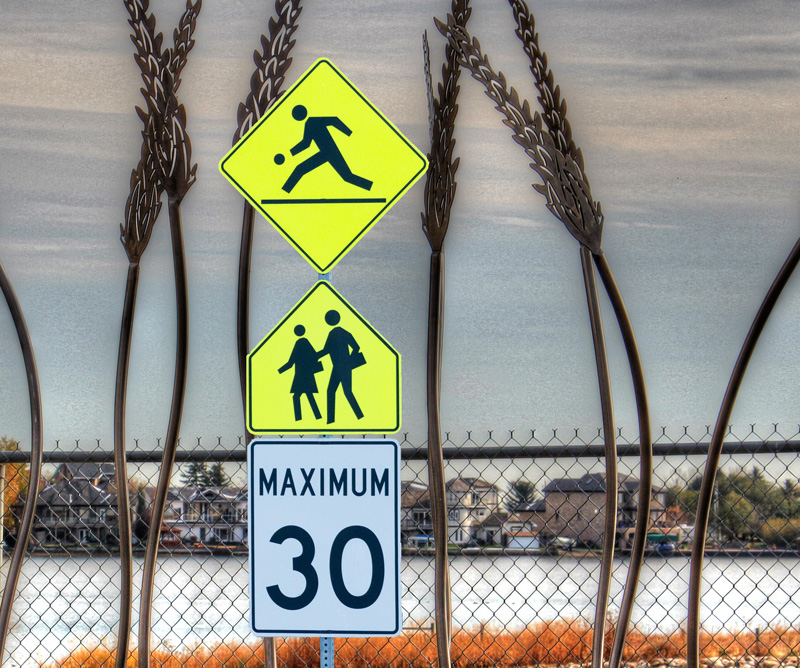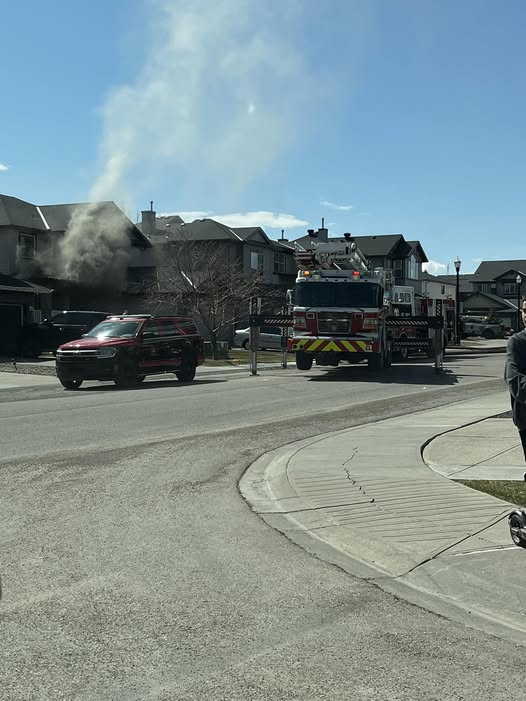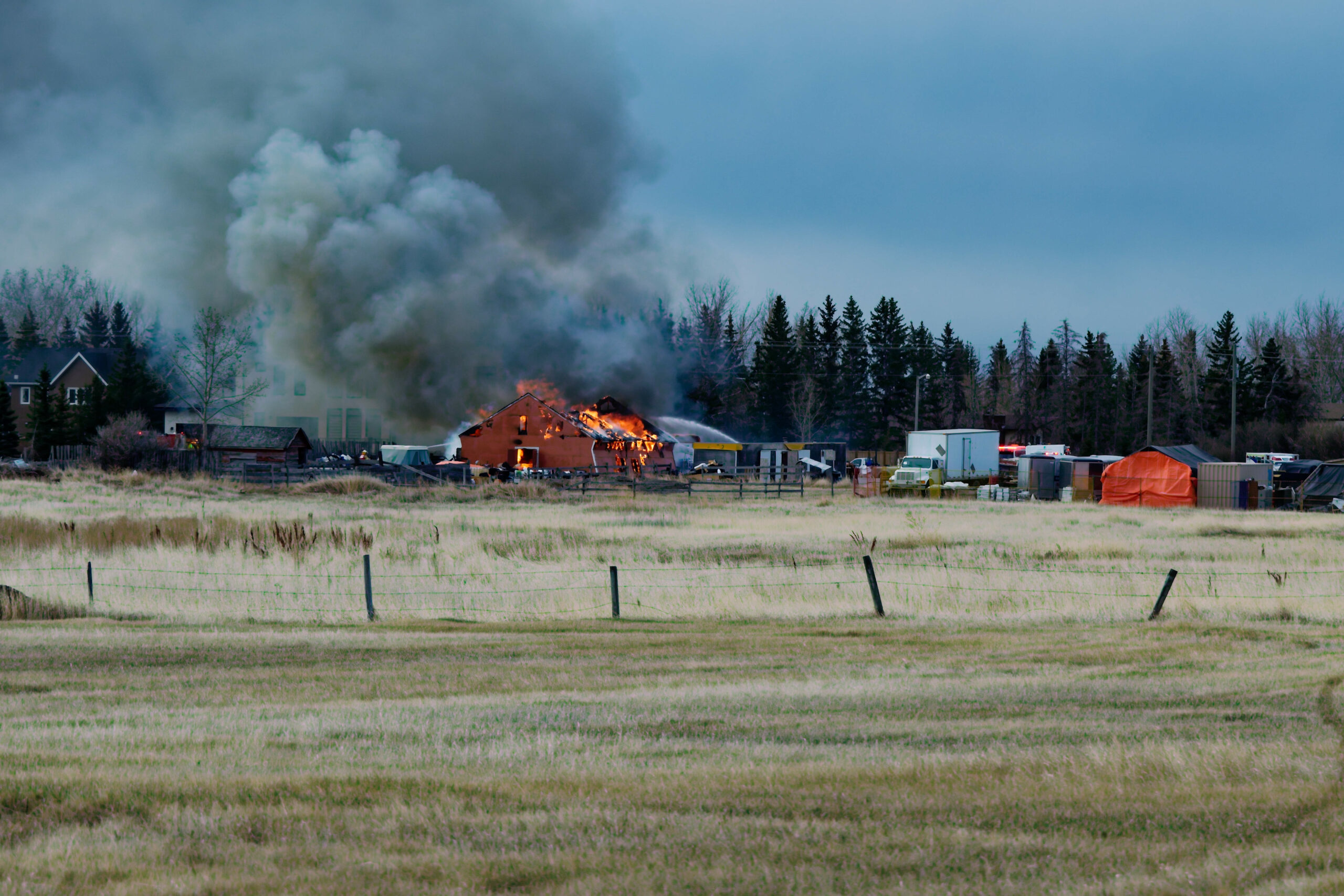On Aug. 20, Chestermere City Council passed a bylaw to harmonize all school and playground speed limits effective Sept. 3.
“We looked at the overwhelming evidence that having a consistent speed limit at consistent times reduces collisions,” said Chestermere Mayor Marshall Chalmers.
“Safety is of the utmost importance in our community, and we are keen to add these measures to protect the children of our city,” he said.
The harmonized speed zone model will change the hours school zones are in effect from 7 a.m. until 5 p.m. Monday to Friday, and playground zones from 8:30 a.m. until one hour after sunset every day to 7:30 a.m. until 9 p.m. every day.
The anticipated costs for the transition will be approximately $2000 to $3000.
These costs will encompass the replacement of school zone signs and the modification of the existing playground zone signs.
The City of Chestermere currently has 19 established playground zones which include five school zones, four with playgrounds.
All of the designated zones have extracurricular activities afterhours, along with organized sporting events on the fields during the evenings and weekends.
“This leads to increased pedestrian traffic, in the areas surrounding schools. These activities occur outside the prescribed school zone hours; therefore, the lower speed limits are not in effect,” Peace Officer Sgt. Trever Bowman said.
Although the provincial government specifies the speed limits in the school and playground zones, municipalities have the opportunity to determine the hours the zones are in effect.
The City of Chestermere Communications department requested residents’ feedback on the speed zone harmonization through the City’s Social Media platforms.
However, many residents were divided on whether the harmonization of speed zones would be beneficial to the community.
One comment read, “Leave it as is. School zones as school zones, playground zones as playground zones, don’t become like Calgary.”
Another Facebook user commented, “No, no, no. I’m sure someone will rave over how much safer it’s made Calgary, but I have seen them as nothing but a waste and a total pain. Even with small kids of my own, I am totally against the harmonized zones.”
“No. Are you kidding, we already are limited to 40 km/h everywhere in town. We might as well all buy scooters at this rate. That’s just ridiculous,” added a Facebook user.
While others were in favour of the harmonized speed zone model.
“Like it. Playground zones are year-round so even better,” a comment said.
“This needs to happen. The school zone in front of Rainbow Creek should be a playground zone as there is a playground. It also needs to be enforced year-round,” another comment read.
“We could also teach children to pay attention to cars on the road. It has become a free for all with not only just children but adults just walking out onto the road without looking because they have the right of way,” added a Facebook user.
Council has indicated they are appreciative of the input Chestermere residents had, and value the comments provided from both sides of the harmonized speed zone model, however the number of respondents, 71, is too small to determine if the results were representative of the views of the Community of the Whole.
The University of Calgary conducted a traffic study of the harmonized speed zone model which showed that following the implementation of the harmonized zones there was a 30 per cent decrease in pedestrian-related collisions, while the average speed in the zones dropped from 35.9 km/h to 30.1 km/h, Bowman said.
While the City of Edmonton experienced similar results, with a 12 km/h decrease in average speeds, a 43 per cent decrease in injury related collisions, and a 71 per cent decrease in collisions involving vulnerable road users.
“It is evident that the harmonized model increases public safety by reducing speed, collision-related injuries in the playground zones,” Bowman said.
Adding, “Cities like Calgary and Edmonton are reporting up to 70 per cent decreases in collisions with pedestrians and cyclists. This is a simple change that has significant results to improve traffic safety.”
Not only does the harmonized speed zone model reduce speed-related collisions, but it also improves drivers’ memory of speed limits, and improves safety for vulnerable road users.
However, it is expected that there could be initial resistance to the harmonized speed zone model transition, as both Edmonton and Calgary had experienced.
In 2017, the City of Calgary conducted a review and survey of the model four years after the harmonization.
The survey found 58 per cent of respondents knew exactly when the zones started and finished, and 80 per cent of respondents found it easier to remember the zone times because the single zone is consistent throughout the year, Bowman said.
“This is one more way we are contributing to keeping Chestermere kids safe,” said Chestermere Deputy Mayor Ritesh Narayan.
“We know that many parents do a wonderful job of educating their kids about road safety, and many drivers are very conscious when driving through these areas.
“By harmonizing school and playground zones, this is one more piece of the puzzle that will help make our streets safer for everyone,” Narayan added.











